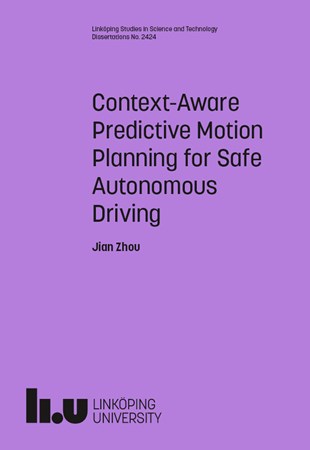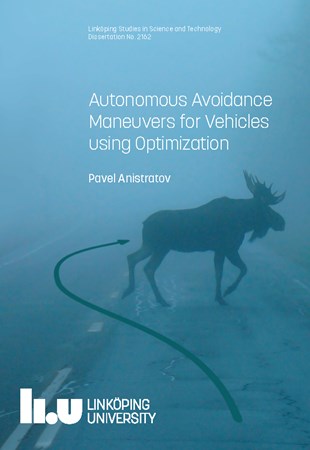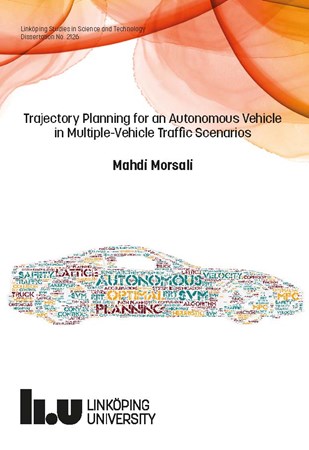Self-driving cars and automated transport have the potential to increase efficiency and safety in traffic. Research from the division, as presented in (Olofsson, B. et al., 2020), demonstrates how autonomous functions in vehicles can enhance safety and reduce the number of fatal and serious accidents in traffic.
Our research aims at developing methods to enable robust, fault-tolerant, safe, and resilient automation of vehicles, which operate reliably even under significant uncertainties in the environment and measurements from various types of sensors. Prominent aspects of the research include planning and robust control of vehicles, optimization of vehicle maneuvers, modeling and prediction of surrounding traffic behavior, as well as analysis of vehicle behavior in traffic.
Our research encompasses both passenger cars and heavy vehicles, and we utilize the research arena Visionen for experiments, which enables the transition from simulation to experiment (Sim2Real) as described in the LiU article "From simulation to reality with autonomous cars".
Currently, our research activities mainly fall into three categories:
- planning and control
- modeling and prediction of surrounding traffic
- vehicle dynamics
Below follows a brief description of our research and key references for those interested in further details.
Planning and Control
Planning and controlling the motion of a vehicle in a safe and efficient manner is challenging for several reasons. A key challenge is the dynamic interaction with the surrounding environment and vehicles, as well as the uncertainty inherent in the specific vehicle's behavior. Perception and signal processing of sensor data, for example from sensors such as cameras, lidar, and radar are used in autonomous vehicles to create an accurate picture and understanding of the environment. This environmental representation is central for making correct decisions and planning the vehicle's trajectory. The figure below illustrates a situation with several surrounding vehicles (SV), where we do not know exactly how they will act, and we wish to plan the movement for the ego vehicle (EV).
An interesting method to address this problem is model predictive control (MPC), where a model of the vehicle and its environment is included in an optimization problem to compute the vehicle's next movements. In (Zhou, J. et al., 2024), a method is presented for how the interaction between surrounding vehicles can be incorporated into planning. A fundamental property of problems involving multiple vehicles is the difficulty in knowing exactly how the environment will act, as illustrated in the figure below.
For this reason, robustness against such uncertainty is studied in MPC (Zhou et al., 2025a). The approach is then extended in (Zhou et al., 2025b) where the static environment, such as road network information, is included in the problem formulation. Other examples of results based on various techniques for safe planning and navigation in dynamic environments are (Morsali, M. et al., 2020) and (Mohseni, F. et al., 2020).
Uncertainty in the behavior of surrounding traffic can be managed by predicting possible situations, especially potentially hazardous ones, that may arise over a predetermined prediction horizon and then including that information in the motion planning and control. A method for this is presented in (Fors, V. et al., 2022). The video below illustrates how such an approach works for decision-making in a complex and uncertain traffic situation involving multiple vehicles.
Modeling and Prediction of Surrounding Traffic
In (Westny, T. et al., 2023a), it is shown how graph-based probabilistic neural network models can be used to predict the movements of surrounding traffic in complex situations. Specifically, the modeling of interactions between vehicles is studied, as this greatly affects vehicle behavior in complex traffic scenarios, such as a roundabout. There are well-established models for how vehicles move, so-called motion models. It has proven advantageous to include such motion models in neural network models, as this increases prediction performance and the generalization capability of the models. In (Westny, T. et al., 2023b), the impact of different choices of motion models and integration methods on model performance is studied. The developed model is summarized in the figure below.
Vehicle Dynamics
Optimal Vehicle Maneuvers
Long Vehicle Combinations
The introduction of long vehicle combinations (LCV), such as A-double and DuoCat, is ongoing, which provides an opportunity to reduce operating costs and increase transport efficiency. Therefore, it is interesting to study the properties of such long combinations.
One question is how these vehicles perform on the road, for example in complex traffic situations such as lane changes, roundabouts, intersections, and tight curves. In this research, the behavior of the vehicles is studied and analyzed with respect to performance-based standards using naturalistic driving data from experiments with LCVs. The performance assessment mainly concerns rearward amplification, low-speed swept path, high-speed transient offtracking, and high-speed steady-state offtracking; see (Behera et al., 2024) for more details.











